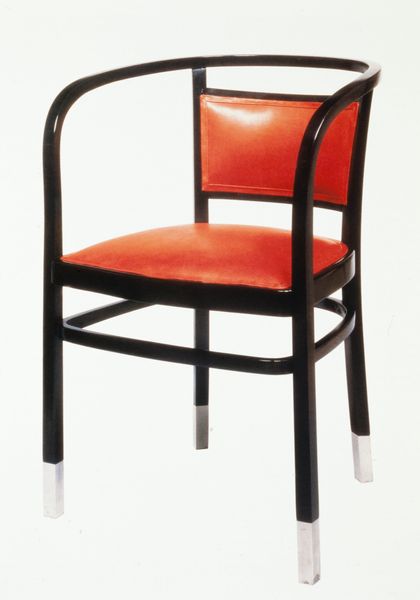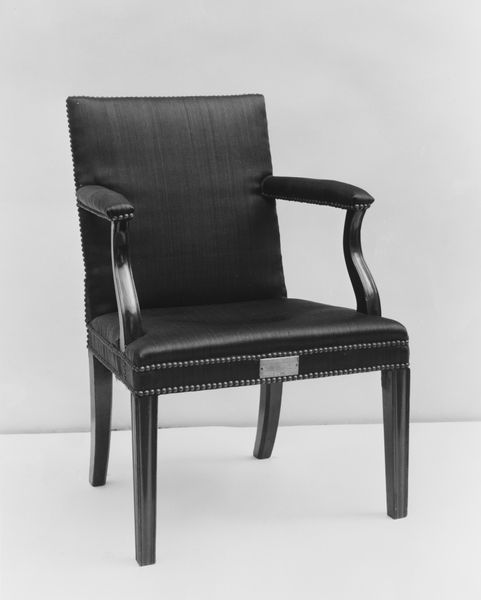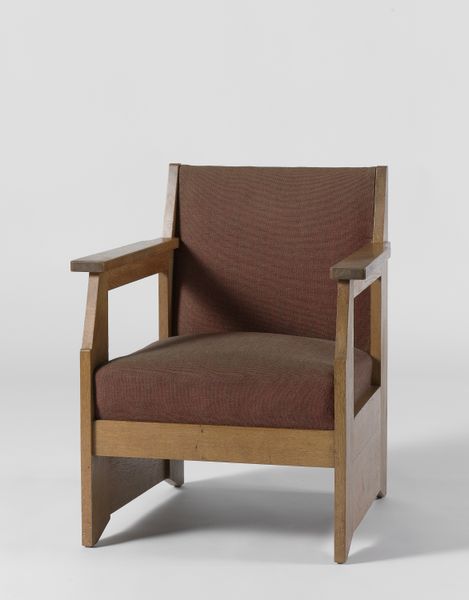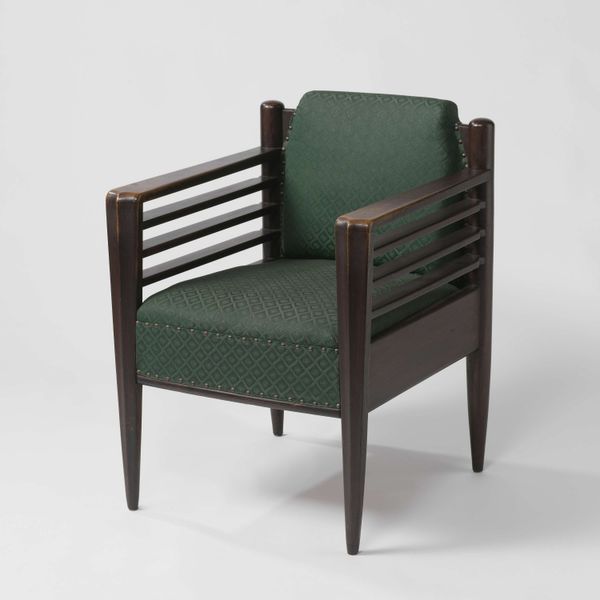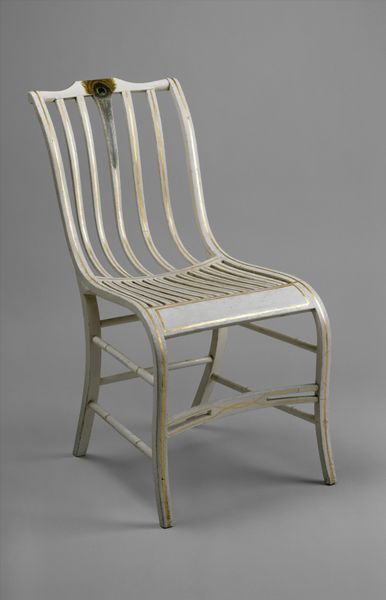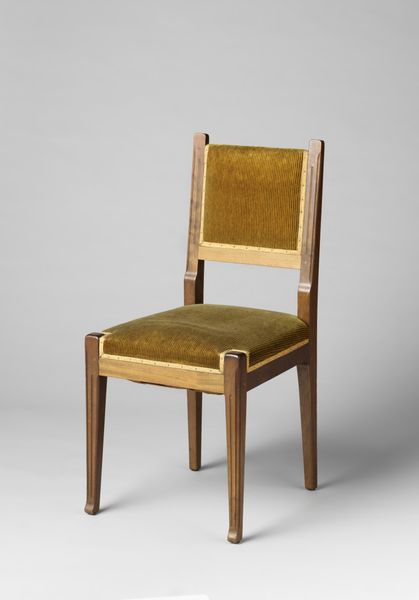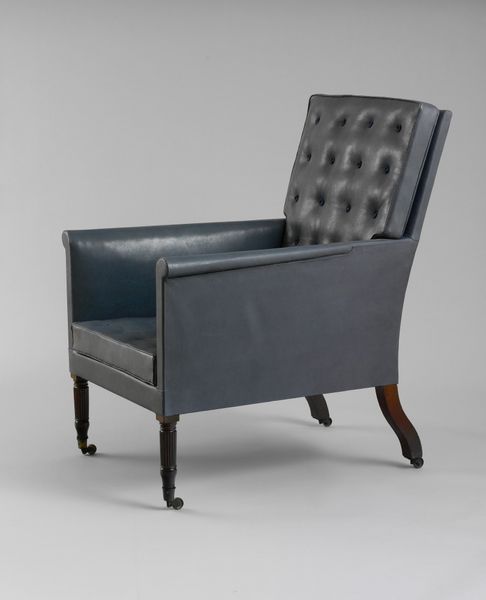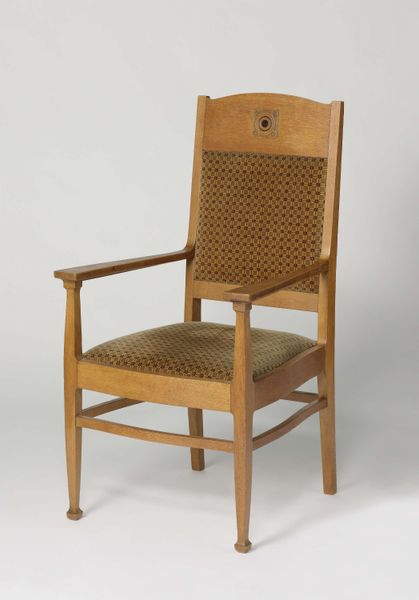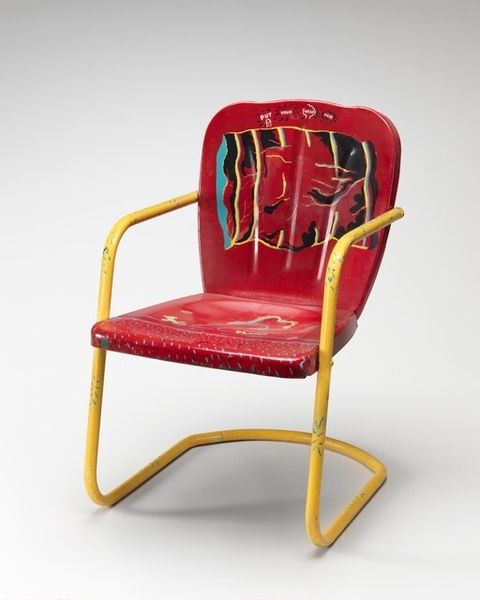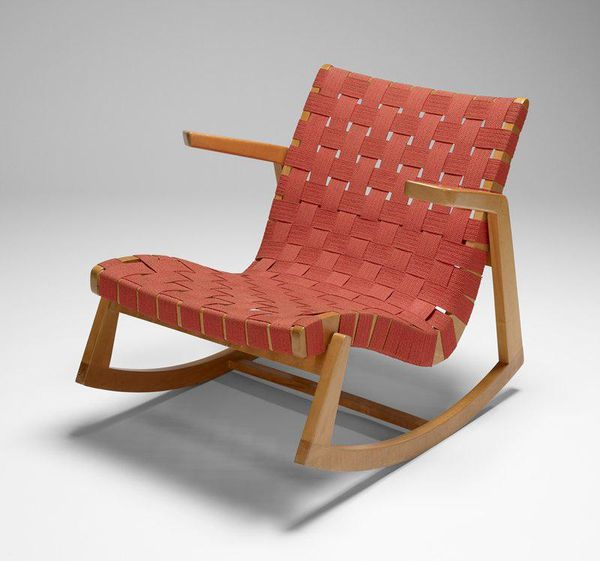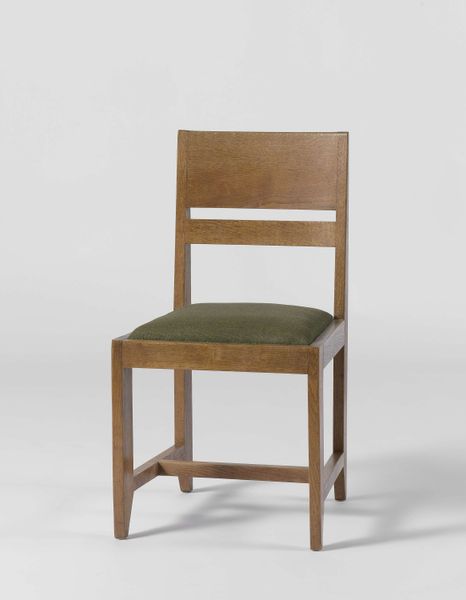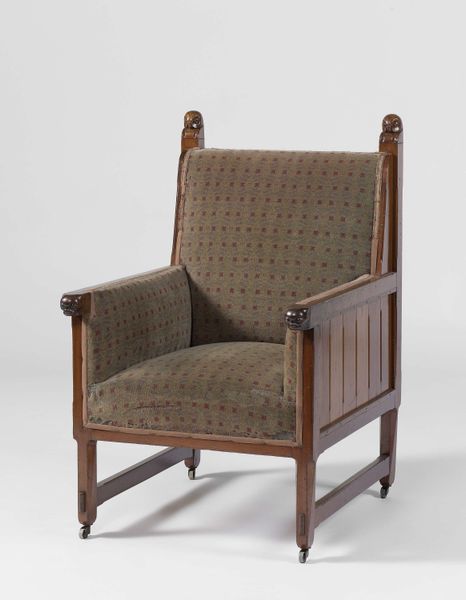
mixed-media, metal, sculpture
#
portrait
#
art-deco
#
mixed-media
#
metal
#
geometric
#
sculpture
#
modernism
Dimensions: height 91 cm, width 55 cm, depth 81.5 cm, weight 6.2 kg
Copyright: Rijks Museum: Open Domain
Curator: This rather fetching seat, ladies and gentlemen, is a passenger seat designed for the Fokker F.XII and F.XVIII aircraft, circa 1930 to 1933, produced by Studio Mutters. Note the combination of materials, metal framework and leather upholstery. Editor: Gosh, it's so streamlined. It looks ready to *fly* you directly into a jazz age daydream. It's less about sitting and more about experiencing swift, forward movement. Like a futuristic chariot. Curator: Indeed. The chair's design neatly encapsulates the key principles of modernism: form following function and clean, geometric lines. Look closely, and you’ll observe the subtle art deco influences too, that geometric sensibility married with machine-age aesthetics. Editor: I see how the design itself is a kind of map of aspirations, mapping out hope through the machine-made. Those tubular forms… they are comforting, almost like a gentle hug as one hurtles through the sky, trusting the technology of the age. It’s an altar to modern convenience! Curator: Very perceptive. Let’s not overlook how this seemingly simple piece resonates on multiple levels. Consider the symbolic associations of air travel during this period: speed, technological progress, global interconnectedness. The seat signifies more than just a place to sit; it embodies a set of social and cultural values. The use of metal suggests both durability, stability, and an unwavering march of progress. Editor: Absolutely! Even the color feels symbolic – that warm, almost reddish-brown leather has a real depth, like rich earth seen from above, all safe, controlled and above the world below. It all seems intended to induce both reassurance and awe. Curator: Indeed. A fascinating confluence of art, technology and social commentary, all conveniently packaged as airborne seating. It's a powerful example of how design objects can function as cultural icons. Editor: So it isn’t just furniture, then, but a time capsule carrying both the hopes and dreams – and even perhaps, unspoken anxieties – of a bold new era. It invites us to ask what shapes our faith in flight, both then and now.
Comments
rijksmuseum about 2 years ago
⋮
This lightweight aluminium aeroplane seat was used on the Amsterdam–Batavia service from 1930. The Fokker aircrafts of the Koninklijke Luchtvaart Maatschappij (KLM), or Royal Dutch Airlines, could reach the capital of the former Dutch East Indies in about ten days. KLM was one of the very few companies to install modern tube-frame seats in its aeroplanes. The back and headrest were adjustable for improved comfort.
Join the conversation
Join millions of artists and users on Artera today and experience the ultimate creative platform.
